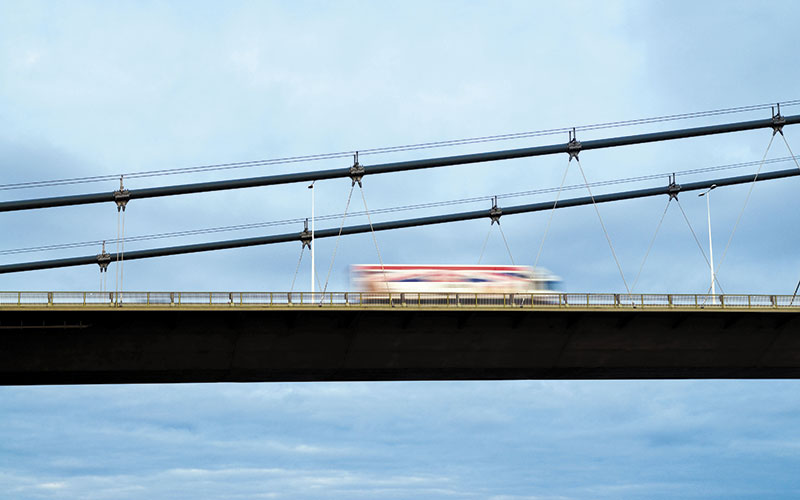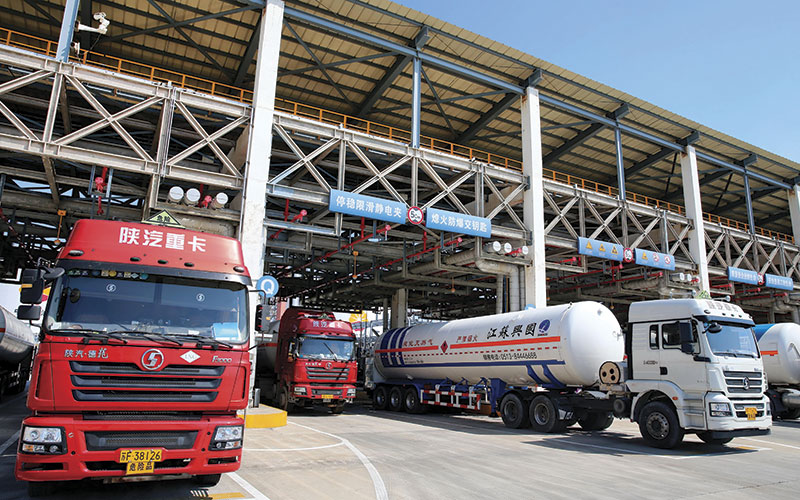On the road with LNG
To support the transition to a carbon neutral future, Europe’s heavy-duty transportation sector needs alternative fuels. Andrea Gerini at NGVA Europe champions LNG as the fuel of the future for long haulage

Heavy-duty freight transport is a key economic sector in Europe. As such, and being heavily reliant on imported oil, it has a crucial contribution to make to decarbonising the European economy if Europe wants to fulfil its commitments under the 2015 Paris agreement.
In order to curb the industry’s emissions, the European Union has outlined its CO2 emissions reduction policy for heavy-duty vehicles (HDVs), requiring emissions to be reduced by 15% by 2025 and 30% by 2030. The transition to alternative powertrains in combination with low-carbon fuels will play a fundamental role in achieving these targets.
The case for natural gas
HDV operators are increasingly moving to LNG as a fuel of choice
The use of natural gas in transportation is well established globally, with nearly 26.5m natural gas vehicles (NGVs) worldwide – of which Europe represents 7%. There are some 31,000 refuelling stations across the globe, with 15.7% of these in Europe.
Two forms of natural gas are currently used in vehicles: compressed natural gas (CNG) and liquefied natural gas (LNG). Biomethane renewable natural gas (RNG) can also be used as a transportation fuel in the form of CNG or LNG.
As technology advances HDV operators are increasingly moving to LNG as a fuel of choice. Not only is it cost competitive with diesel, but engines fuelled by LNG are 50% quieter and produce significantly less nitrogen oxide and particulates than diesel engines. CO2 emissions are 20% lower too, thanks to new engine technologies such as high-pressure direct gas injection. LNG shifts to a higher gear LNG is already available in Europe today. There are currently close to 4,000 LNG-fuelled vehicles on European roads, supported by more than 150 LNG fuelling stations.
For transportation applications, it is most economical to store natural gas as a liquid. The gas is cooled to temperatures as low as -162°C, compressing it to 1/600th of its original volume; this makes it easier to transport and store. Looking at the energy content of the unit of volume, 1.6L of LNG corresponds to 1L of diesel fuel, which means a much greater range is achieved with LNG. This makes it a more attractive fuel for regional, long-haul and high-mileage truck fleet operations. Today, solutions with up to 1,600km range are available on the market.
The price gap between LNG and diesel has been fairly consistent and robust, even following the 2015 drop in oil prices; on an energy equivalent basis, LNG fuel costs on average about 55% less than diesel. Furthermore, LNG benefits include lower excise duty and reduced taxes in some European countries. So while an LNG truck is more expensive than a diesel truck, these significant fuel and operation cost savings give a LNG conversion payback between one to three years.
 Asia Pacific leads the way
Asia Pacific leads the way

David Perry, Business Manager and News Editor at NGV Global, spotlights the major LNG developments in Asia Pacific – on land and at sea
Land
- China is experiencing huge growth for LNG-fuelled transportation where increasingly stringent domestic environmental policies are driving the transition from heavy-duty diesel trucks to NGVs. There were 350,000 LNG vehicles operating in China by the end of 2017, refuelled from 3,100 stations. That figure may double by 2020, based on current growth
- In Japan, Isuzu Motors Co., Ltd. is working with the support of the Ministry of the Environment to reduce emissions from heavy transport vehicles and has prepared two LNG trucks for testing
- Major oil companies in India are moving collectively to introduce close to 20 LNG fuelling stations on some of the country’s main heavy transportation routes. LNG has been approved for long haul trucking and agricultural tractors. Indian rail is experimenting with LNG for locomotives on non-electrified lines
- A TATA Daewoo high horsepower LNG truck is kicking off a long-awaited pilot project in Korea
- Indonesia’s oil and gas corporation PT Pertamina and railway company PT Kereta Api Indonesia, both state-owned, began testing LNG in late 2016.
Marine
- China’s coastal waters and major inland waters are now protected by domestic emission control areas that limit sulphur and particulate matter. There are reportedly 280 LNG vessels operating in local waters, and the number of bunkering ports is growing
- Japan’s first LNG bunkering vessel will go into operation in 2020, and joint ventures have been established to build bunkering facilities and promote LNG as a marine fuel
- The Indian Register of Shipping has expanded its rules to embrace LNG-fuelled coastal and inland vessels, anticipating the introduction of legislation for cleaner transportation on India’s inland waterways. The Port of Kochi offers LNG bunkering. Ten new R-LNG terminals are to be built and some will likely include bunkering locations
- The Korean government is supporting the building of 140 small and medium LNG-fuelled ships by 2025, and the creation of LNG bunkering facilities is also on the government’s agenda
- Singapore is preparing to become a major centre for bunkering LNG, including building a bunker vessel for ship-to-ship refuelling, commencing 2020
- Pengerang in Malaysia joins the growing number of Asian ports gaining experience with LNG bunkering. Three Malaysian companies have joined to build and operate the first LNG-powered ship operating in Malaysian waters by the end of 2020
Will LNG transform transport?
In our recent report ‘gmobility: Driving Circular Economy in Transport’, published in association with the European Biogas Association, an estimated 280,000 trucks could be fuelled with LNG by 2030 in Europe.
To realise anything near that number, significant investment is needed in new infrastructure in Europe – this fleet will require at least 2,000 LNG stations, contributing to a yearly consumption of 10bn cubic metres of LNG. To this end, and in accordance with the directive on the deployment of alternative fuels infrastructure, the EU has promoted the construction of LNG stations by
the TEN-T programme and projects as the LNG Blue Corridors in order to create a road network with LNG stations every 400km, by 2025.
Long-term stability and homogeneity of the level of excise duties for LNG in the different European countries will also be necessary. From both LNG station operator and from the fleet operator standpoint, stability of total cost of ownership conditions are fundamental to support the market growth. LNG bunkering infrastructure is a necessity for operating LNG stations. The proximity of LNG bunkering infrastructure impacts directly on the operational costs of the LNG stations. NGVA Europe welcomes current bunkering developments in the Baltic states as well as in the Mediterranean region. This will boost the LNG fuelling infrastructure.
While the transition to LNG in transport has already begun, it will need to accelerate in the next decade.
By Andrea Gerini, Secretary General, Natural and bio Gas Vehicle Association Europe
Image credit | Alarmy






Follow us
Advertise
Free e-Newsletter